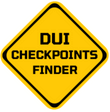BAC Calculator
Your BAC will Appear Here.

BAC Decrease Over Time
Are You curious about how your BAC (Blood Alcohol Concentration) decreases over time? After having a drink, your body starts breaking down alcohol. On average, BAC decreases by about 0.015% per hour. So, if you check your BAC and it’s at 0.08%, after one hour, it could drop to around 0.065%. Remember, this can vary based on factors like weight, metabolism, and the amount of alcohol consumed.
About Our BAC Calculator
Welcome to DUI Checkpoints Finder. Today We added a helpful tools into this Website – Advanced BAC (Blood Alcohol Content) Calculator, a handy tool designed to help you most accurate estimate your alcohol level responsibly. Whether you’re enjoying a night out, attending a party, or just curious about your alcohol intake, this calculator provides insights into your BAC.

How BAC Calculator Works:
Our BAC Calculator uses a straightforward formula that takes into account factors like the number of drinks consumed, alcohol content per drink, your weight, and the time since your first drink. By considering these variables, the calculator estimates your current BAC level.

The ‘r’ value is adjusted based on your weight to enhance accuracy. It also considers the natural rate at which your body eliminates alcohol.
Who Can Use It:
Night Out Enthusiasts:
- If you’re heading out for a night on the town, the BAC Calculator is your go-to tool to monitor your alcohol intake. It helps you have a good time while staying within safe limits, avoiding any encounters with the police.
Designated Drivers:
- For those taking the wheel, especially designated drivers, the BAC Calculator ensures you’re well within legal alcohol limits before getting behind the wheel. It’s a crucial step for responsible driving and steering clear of DUI (Driving Under the Influence) checkpoints.
Event Organizers:
- Planning an event or party? Use the BAC Calculator to promote responsible drinking among attendees. It’s a proactive measure to ensure everyone’s safety and well-being, potentially avoiding any legal issues related to alcohol consumption.
Individuals on Medication:
- If you’re on medication, the BAC Calculator assists you in understanding the potential interactions between alcohol and your meds. Prioritizing your health and making informed decisions is crucial, especially if you’re in the driver’s seat.
Curious Minds:
- For those curious about the effects of alcohol on their bodies, the BAC Calculator offers valuable insights. It’s a simple yet effective way to make responsible choices, both for personal well-being and when encountering DUI checkpoints.
The BAC Calculator is a versatile tool for anyone – from partygoers to designated drivers – ensuring a safe and responsible approach to alcohol consumption, reducing the risk of legal issues and promoting overall well-being.
Why Use the BAC Calculator:
- Safety: Stay within legal limits and reduce the risk of accidents.
- Responsibility: Make informed decisions about alcohol consumption.
- Health: Understand how alcohol interacts with your body.
- Legal Compliance: Avoid legal issues related to drinking and driving.
Our BAC Calculator is Free & a simple yet powerful tool to ensure you enjoy alcohol responsibly. Remember, it’s just an estimate, and individual factors may vary. Always prioritize your safety and the safety of those around you. Drink responsibly, know your limits, and use our BAC Calculator as a guide on your journey to responsible drinking.
Factors Influencing Blood Alcohol Content (BAC):
Several individual factors can influence Blood Alcohol Content (BAC) percentages. They are :
Weight:
- Generally, the heavier a person is, the more water is present in their body, which can dilute alcohol. As a result, individuals with higher body weight may have a lower BAC compared to lighter individuals after consuming the same amount of alcohol.
Gender:
- Women tend to have a higher BAC than men of the same weight after consuming the same amount of alcohol. This is due to differences in body composition, with women typically having a higher proportion of body fat, which doesn’t absorb alcohol like muscle tissue does.
Metabolism:
- The rate at which the body metabolizes alcohol varies among individuals. Factors such as age, genetics, and overall health can influence how quickly or slowly the body processes alcohol.
Food Intake:
- Consuming food before or while drinking can slow down the absorption of alcohol into the bloodstream. A full stomach can help mitigate the effects of alcohol, resulting in a lower BAC.
Alcohol Tolerance:
- Regular drinkers may develop a tolerance to alcohol, requiring more drinks to achieve the same level of intoxication. However, this tolerance does not change the physiological impact of alcohol on the body.
Hydration Levels:
- Dehydration can lead to a higher BAC. Alcohol has a more significant impact when the body is dehydrated because there is less water available to dilute the alcohol.
Medications:
- Certain medications can interact with alcohol, affecting how the body processes and eliminates it. It’s essential to be aware of potential interactions between medications and alcohol consumption.
Rate of Consumption:
- The speed at which alcohol is consumed matters. Rapid consumption can lead to a quicker rise in BAC compared to slower, spaced-out drinking.
Liver Health:
- The liver plays a crucial role in metabolizing alcohol. Individuals with liver conditions may experience slower alcohol metabolism, leading to a higher and more prolonged BAC.
Blood Alcohol Content (BAC) Limits
| BAC Level | Legal Status |
|---|---|
| 0.00% – 0.07% | Legal: Okay for most drivers, but some restrictions may apply, especially for young or new drivers. It’s the “be careful” zone. |
| 0.08% and above | Illegal for Driving: Crossing this line is a no-go. If your BAC is 0.08% or higher, it’s against the law to drive. You could face fines, lose your license, or even get charged with a DUI (Driving Under the Influence). |
| 0.10% | Illegal for Driving: California sees a BAC of 0.10% as a higher risk. Breaking this limit comes with more serious consequences for drivers. |
| 0.15% and above | Illegal for Driving: Reach this level, and you’re in the “big trouble” zone. Penalties get even more severe, including hefty fines, longer license suspension, and mandatory alcohol education programs. |
FAQs
Q: What is a BAC Calculator?
- A: A BAC Calculator is a tool that estimates your Blood Alcohol Content based on factors like the number of drinks, alcohol content, weight, and time since drinking.
Q: How does the BAC Calculator work?
- A: It uses a formula to estimate BAC, considering your personal details and alcohol consumption.
Q: Why should I use a BAC Calculator?
- A: It helps you understand how alcohol affects your body and ensures responsible drinking, especially before driving.
Q: Is the BAC Calculator accurate?
- A: It provides estimates. Factors like metabolism and individual differences can influence accuracy.
Q: Can the BAC Calculator tell me if I’m legally drunk?
- A: It can give an estimate, but legal limits vary. Always check local laws.
Q: Who can use the BAC Calculator?
- A: Anyone curious about their BAC, party-goers, designated drivers, event organizers, and individuals on medication.
Q: Is the BAC Calculator only for the USA?
- A: No, it can be used worldwide. Adjustments may be needed for local legal limits.
Q: Can the BAC Calculator prevent a DUI?
- A: It helps you make informed decisions, but responsible drinking is key to avoiding DUI.
Q: Can medications affect BAC?
- A: Yes, certain medications can interact with alcohol, impacting BAC.
Q: How often should I use the BAC Calculator?
- A: Use it when planning to drink or if you’re unsure about your alcohol limits.
Q: Can the BAC Calculator help me lose my license?
- A: No, but it helps you stay within legal limits to avoid license-related issues.
Q: Does the BAC Calculator work instantly?
- A: Yes, it provides quick estimates based on your inputs.
Q: Can food change my BAC result?
- A: Yes, eating can slow alcohol absorption, affecting BAC levels.
Q: Can the BAC Calculator be used for legal purposes?
- A: It’s a tool for personal awareness, not legal evidence.
Q: How does weight impact BAC?
- A: Heavier individuals may have a lower BAC as alcohol is diluted in more body water.
Q: Does the BAC Calculator apply to all types of alcohol?
- A: Yes, it works for various alcoholic beverages.
Q: Can the BAC Calculator be used by teens?
- A: It’s suitable for educational purposes, but legal limits for young drivers may differ.
Q: Does the BAC Calculator guarantee I won’t be impaired?
- A: No, individual tolerance varies. Always prioritize safety.
Q: Can the BAC Calculator help at DUI checkpoints?
- A: It’s a personal guide. Avoid drinking and driving to handle checkpoints responsibly.
Q: Is the BAC Calculator a replacement for professional advice?
- A: No, consult professionals for legal or medical concerns. The BAC Calculator is an awareness tool.
Q: How long does alcohol stay in your system?
- Alcohol typically stays in your system for about 1 to 2 hours per standard drink. However, individual factors like weight, metabolism, and hydration can influence this.
Q: How long does it take for alcohol to leave your system?
- On average, it takes about 2 to 3 hours for your body to eliminate the effects of one standard drink. Remember, this varies for each person.
Q: How does a breathalyzer work?
- A breathalyzer measures the alcohol content in your breath to estimate the blood alcohol concentration (BAC). It works on the principle that alcohol in your bloodstream is also present in your breath.
Q: How many drinks is .05 BAC?
- The number of drinks needed to reach a .05 BAC depends on factors like weight and gender. On average, it might take one to two drinks for most people.
Q: How long does 2 beers stay on your breath?
- The presence of alcohol on your breath after consuming 2 beers can last around 4 to 6 hours. Again, individual factors play a role.
Q: How long does alcohol stay in urine?
- Alcohol can be detected in urine for up to 12 hours after consumption, but this can vary based on factors such as hydration and individual metabolism.
Q: How long will 4 beers show up on a breathalyzer?
- Consuming 4 beers may result in a positive breathalyzer test for approximately 8 to 12 hours, depending on various factors like body weight and metabolism.
Q: Can drinking water speed up the elimination of alcohol?
- Yes, staying hydrated can help your body process alcohol more efficiently. Water supports the liver in breaking down alcohol, but it doesn’t guarantee an immediate elimination.
Q: Does eating food before drinking help reduce BAC?
- Yes, having food in your stomach slows down the absorption of alcohol, which can help lower your blood alcohol concentration (BAC).
Q: How does alcohol affect your driving abilities?
- Alcohol impairs coordination and reaction time, making driving dangerous. Even small amounts can affect your ability to drive safely.
Q: What’s the legal BAC limit for driving?
- The legal limit for blood alcohol concentration (BAC) while driving is usually 0.08%. However, it’s crucial to prioritize safety and consider not driving if you’ve consumed any alcohol.
Q: Can medications affect BAC readings on a breathalyzer?
- Some medications can potentially influence breathalyzer readings. It’s essential to consult with a healthcare professional about the impact of medications on alcohol testing.
Q: How does alcohol impact your sleep?
- While alcohol may make you feel sleepy initially, it disrupts sleep patterns and can lead to poor-quality sleep.
Q: Is there a way to speed up alcohol metabolism?
- No, the body metabolizes alcohol at a fixed rate. Attempts to speed up the process, like coffee or exercise, won’t significantly change the elimination time.
Q: How does alcohol affect women differently than men?
- Generally, women tend to feel the effects of alcohol more quickly than men due to differences in body composition and metabolism.
Q: Can you sober up quickly after drinking too much?
- Unfortunately, sobering up takes time. Drinking water, eating, and resting can help, but only time allows your body to process and eliminate alcohol.
Q: What’s a standard drink size?
- In the United States, a standard drink contains about 14 grams of pure alcohol, equivalent to 5 ounces of wine, 12 ounces of beer, or 1.5 ounces of distilled spirits.
Q: Does age influence alcohol metabolism?
- Yes, alcohol metabolism tends to slow down with age. Older individuals may take longer to process and eliminate alcohol from their systems.
Q: Can you get a hangover from moderate drinking?
- Yes, even moderate drinking can lead to a hangover. Factors like dehydration and the presence of congeners in alcoholic beverages contribute to hangover symptoms.
Q: Can someone be allergic to alcohol?
- While rare, some people may experience allergic reactions to specific ingredients in alcoholic beverages, such as grains or sulfites. It’s essential to seek medical advice if you suspect an alcohol allergy.
